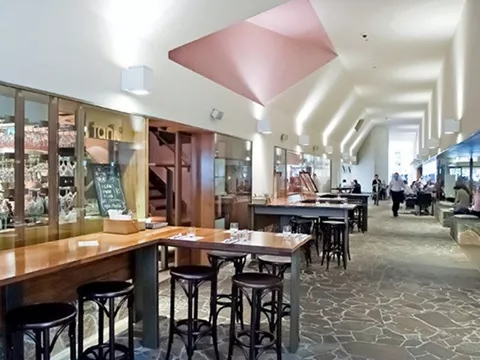
Setting up your office space is a big milestone for any growing business. While it's natural to feel overwhelmed by the various expenses involved, having a clear understanding of SME office costs can transform this challenge into an opportunity for smart planning.
We've put together this practical budget template and checklist to help you navigate office costs with confidence. Think of it as your roadmap to making informed decisions about your workspace, helping you track expenses while keeping your financial goals in sight.
Rent and Location Overview
Office rent will form a significant part of your monthly budget, so understanding the market helps you plan effectively. Australian CBD rates vary considerably, reflecting each city's unique business landscape.
Sydney's premium locations command around A$1,000 per square metre annually, giving you access to the nation's financial centre. Melbourne sits at approximately A$850/m², while Brisbane offers solid value near A$700/m². Adelaide and Perth present budget-friendly options around A$600/m², with Canberra in the middle range at A$750/m².
It's worth noting that suburban facilities often reduce these figures by 30-40%, and many successful organisations operate brilliantly outside CBD areas.
Fit-Out and Setup Costs
Transforming an empty space into a functional office requires careful planning and realistic budgeting. Fit-out expenses depend on your industry needs and the environment you want to create for employees.
Basic fit-outs start around A$500/m², covering essential equipment and standard finishes. Most businesses find the sweet spot between A$1,000-A$1,500/m², balancing quality with sensible spending. Recent data indicates medium-quality fit-outs now average A$2,453/m² across Asia-Pacific markets. Premium specifications exceeding A$2,000/m² create impressive facilities but require substantial funds.
As an example, a 200-square-metre space could require A$100,000 to A$490,000 in fit-out investment—figures that highlight why it's essential to prepare and estimate carefully.
Recurring Operational Costs
Your monthly operational expenses typically add 20-30% on top of rent. These business expenses occur regularly and deserve attention in your planning. Electricity usually runs A$500-A$1,500 monthly, while reliable internet services cost A$200-A$500. Cleaning and maintenance (A$1,000-A$3,000 monthly) keep your workspace professional and welcoming.
Different lease arrangements handle these costs differently. Some include utilities in the base rent, while others require you to manage and pay everything separately. When you speak with landlords, clarify these details to avoid surprises later.
Insurance, Compliance and Legal Fees
While insurance premiums and compliance might seem like just another expense, they provide crucial support and protection for your business. Professional indemnity insurance and public liability coverage safeguard against unexpected claims.
Health and safety compliance, fire inspections, and legal documentation for your lease all contribute to a secure operating environment. Building these into your account from day one helps you stay organized and protected.
Office Budget Template
A well-structured budget planner makes financial management much simpler. Here's a template that covers the essentials:
Initial Setup:
-
Lease deposit and advance pay
-
Fit-out and technology infrastructure
-
Furniture and mobile device setup
-
Software tools and systems
-
Legal documentation
Monthly Operations:
-
Base rent (and mortgage if applicable)
-
Utilities and essential services
-
Internet and phone access
-
Cleaning and maintenance
-
Insurance (monthly portion)
-
Employee facilities and amenities
Quarterly Reviews:
Variable Costs:
-
Travel expenses for staff
-
Entertainment and gifts
-
Training courses and development
-
Other expenses as they occur
Maintaining a 10-15% contingency helps manage unexpected costs without stress. Track everything monthly and review quarterly to ensure you're on course to achieve your objectives.
Office Cost Checklist
This checklist provides an easy way to monitor all aspects of your office costs:
Office Setup & Management Checklist
|
Category
|
Tasks
|
|
Before You Move In
|
☐ Security deposit and first month organised
☐ Fit-out planning and costing
☐ Furniture and equipment selection
☐ Technology and systems setup
☐ Insurance arrangements confirmed
☐ Legal documentation completed
☐ Utility connections scheduled
☐ Important contact details compiled
|
|
Monthly Management
|
☐ Rent payment (note the date)
☐ Utility bills tracking
☐ Internet and phone services
☐ Cleaning schedule maintained
☐ Supplies monitoring
☐ Insurance premiums current
☐ Maintenance issues addressed
|
|
Regular Reviews
|
☐ Insurance renewal dates
☐ Compliance requirements
☐ Lease terms evaluation
☐ Equipment replacement planning
☐ Financial reporting and transactions
☐ Future planning discussions
|
Tips to Control SME Office Costs
Growth-focused planning: Starting with appropriate space and flexible lease terms allows you to monitor performance and expand when income supports it. This approach protects your savings while maintaining professional standards.
Smart flexibility: While modular furniture might cost more initially, it adapts as your needs change, providing long-term value. Prepare for future adjustments without major reinvestment.
Alternative workspace models: Coworking and hybrid arrangements offer interesting possibilities, especially for smaller teams seeking professional facilities without traditional lease commitments.
Open negotiations: Contact multiple providers to understand the market. Most landlords appreciate straightforward discussions about terms, and you might discover opportunities for rent-free periods or fit-out contributions.
Technology as an ally: Digital tools help track expenses and manage transactions efficiently. Many free options support budget planning and financial reporting.
Managing office costs becomes much more manageable when you understand what to expect. This budget template and checklist give you the framework to make decisions that align with your business needs and financial capacity.
Remember, good planning isn't just about spending less—it's about spending wisely. Regular reviews help you evaluate what's working, adjust your approach, and ensure your workspace supports rather than strains your finances.
Frequently Asked Questions






